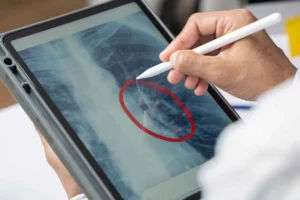Radiology Career Development: Bright Prospects Ahead
Unlock the potential of a rewarding and dynamic profession by delving into the intricacies of Radiology Career Development. As you pave the way for future radiologists, understand the pivotal aspects that can shape a fulfilling career.
Radiology Career Development: Paving the Way for Future Radiologists
Radiology, often hailed as the “eye of medicine,” has come a long way since its inception. The journey from the discovery of X-rays to the advent of cutting-edge imaging modalities narrates a tale of continuous evolution, commitment, and the indomitable spirit of radiologists.
The History of Radiology
Radiology’s history is as intriguing as the images it produces. Let’s break it down:
- Early Beginnings: Dating back to 1895, Wilhelm Conrad Roentgen discovered X-rays, setting a cornerstone for modern medicine. This accidental discovery revolutionized diagnostic medicine, garnering him the inaugural Nobel Prize in Physics in 1901.
- Modern Radiology Advancements: From traditional X-rays, we now have MRI, CT scans, and PET scans. These innovations owe their existence to the relentless efforts of pioneers who believed in the potential of radiology.
The Role of Radiologists
- Diagnostics: At the heart of patient care, radiologists interpret images, spotting abnormalities with an eagle’s eye, aiding in accurate diagnoses.
- Therapeutics: Beyond diagnostics, they play a vital role in treatments, such as tumor ablations and angioplasties, using imaging guidance.
- Research: The world of radiology isn’t limited to clinics. Many radiologists are actively involved in research, contributing to medical literature and innovations.
Career Paths in Radiology
With the vast expanse of radiology, choosing a specialty becomes essential:
- Diagnostic Radiology: This involves interpreting medical images and is the most common specialty.
- Interventional Radiology: A subspecialty that focuses on minimally invasive procedures using imaging guidance.
- Pediatric Radiology: Catering specifically to the younger demographic, ensuring child-friendly imaging.
- Radiation Oncology: It zeroes in on treating cancers with radiation.
Importance of Continuous Learning
In the dynamic world of radiology, staying updated is paramount:
- Training Programs: Post-graduate courses and fellowships help radiologists delve deeper into their chosen subspecialty.
- Conferences and Seminars: Regular participation keeps them informed about the latest advancements and best practices.
- Research Opportunities: These provide avenues to contribute to the field’s growth, often leading to innovations.
Technological Advancements and Impact
- AI in Radiology: Artificial Intelligence has started to play a significant role in image interpretation, promising faster and accurate results.
- Tele-radiology: Offering services remotely, especially in underserved areas, ensuring timely diagnosis and care.
- Advanced Imaging Modalities: The advent of 3D imaging and functional MRI has pushed the boundaries of what’s possible in radiology.
Challenges Faced by Radiologists
- Physical Strain: Long hours can be taxing, leading to musculoskeletal issues.
- Keeping up with Technology: The rapid tech advancements can sometimes be overwhelming.
- Ethical Dilemmas: Balancing patient care and commercial interests can often pose challenges.
Opportunities in Radiology
- Growing Demand: As medicine leans more towards evidence-based practices, the demand for radiologists is on the rise.
- Specializations: Subspecialties offer the chance to focus on niche areas, enhancing expertise and demand.
- Academia and Teaching: Many radiologists opt for teaching, shaping the next generation.
Financial Aspects
Radiology is a lucrative field, but understanding the financial nuances is crucial:
- Salaries and Benefits: On average, radiologists are among the top earners in the healthcare sector.
- Costs of Education: Specialized training comes at a price, but the returns are often worth the investment.
- Return on Investment: The financial rewards, both monetary and in terms of job satisfaction, often outweigh the initial costs.
Building a Robust Network
- Associations and Organizations: Bodies like the Radiological Society offer platforms to connect, learn, and collaborate.
- Mentoring and Peer Guidance: Senior radiologists often play a pivotal role in guiding the younger lot.
- Collaborative Research: Joint efforts often yield better results, fostering growth and innovation.
Work-life Balance in Radiology
- Time Management: Organizing schedules efficiently can free up time for personal pursuits.
- Stress Management: Mindfulness practices and regular breaks can help keep burnout at bay.
- Personal Growth: Radiologists often find time to pursue hobbies, further education, or travel, ensuring a balanced life.
Conclusion
Radiology Career Development isn’t just about understanding images. It’s a holistic journey encompassing continuous learning, adapting to advancements, facing challenges head-on, and harnessing opportunities. As future radiologists pave their paths, the prospects appear brighter than ever, promising a fulfilling and rewarding career.
FAQs
- How has radiology evolved over the years?
Radiology has transitioned from simple X-rays to advanced imaging modalities, backed by technology and research, enhancing diagnostic accuracy. - Is specialization necessary in radiology?
While general radiology offers broad-based knowledge, specialization provides depth and expertise in specific areas, making it a valuable choice. - What role does AI play in radiology?
AI aids in faster image interpretation, ensuring better accuracy and aiding radiologists in their diagnostic processes.


